Bridging In-Office Excellence with Daily Dental Discipline
Combining professional dental treatments with effective at-home oral hygiene is essential for long-lasting dental health. While dental visits provide critical preventive and corrective care, daily routines practiced at home are equally vital for maintaining and enhancing those professional interventions. This article explores best practices, tools, and strategies that complement dental treatments and ensure optimal oral health outcomes.
Fundamentals of Effective At-Home Dental Care
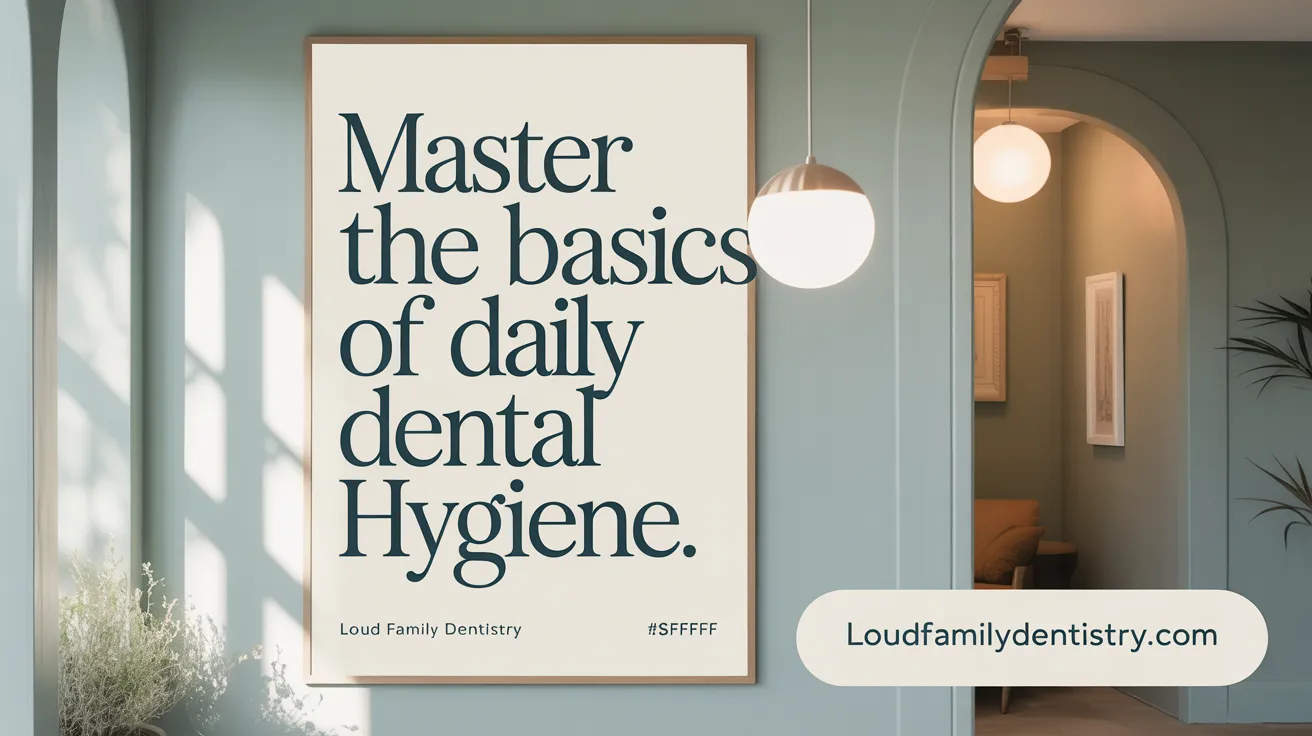
Brushing routines and techniques
An essential part of daily oral hygiene is proper brushing. The ADA brushing recommendations include brushing twice a day for at least two minutes each session using a soft-bristled toothbrush and fluoridated toothpaste. Proper technique involves angling the bristles at 45 degrees toward the gumline and using gentle, circular motions to thoroughly clean all tooth surfaces without damaging gums. Investing in a timer or using a powered toothbrush with built-in timers can help ensure each brushing session lasts long enough for optimal effectiveness.
Importance of flossing and interdental cleaning
Flossing daily is vital for removing plaque and food debris from between teeth and beneath the gumline, areas where a toothbrush cannot reach. Techniques include wrapping about two feet of floss around fingers and gently curving it around each tooth to slide beneath the gumline, moving up and down to dislodge plaque. For those who find traditional floss challenging, alternatives like interdental brushes or water flossers are effective options. These tools can significantly reduce the risk of gingivitis and periodontal disease when used consistently.
Role of mouthwash and tongue cleaning
Using an antimicrobial or fluoride mouthwash after brushing and flossing adds another protective layer by reducing bacteria and strengthening enamel. An alcohol-free formula is preferable to prevent dry mouth. Additionally, cleaning the tongue with a scraper or soft-bristled brush helps eliminate bacteria that cause bad breath and contribute to plaque buildup, supporting overall oral health.
Diet and lifestyle influences on oral health
A balanced diet low in sugary snacks and beverages helps prevent tooth decay by reducing acid attacks on enamel. Incorporating foods rich in calcium, phosphorus, and vitamins C, D, K, and A supports strong teeth and gums. Regular consumption of crunchy fruits and vegetables like apples, carrots, and celery naturally cleans teeth and stimulates saliva production, which neutralizes harmful acids. Avoiding tobacco, limiting alcohol, and not using oral piercings also play crucial roles in maintaining healthy teeth and gums, reducing the risk of disease and damage.
Techniques and Tools for Optimal Home Hygiene
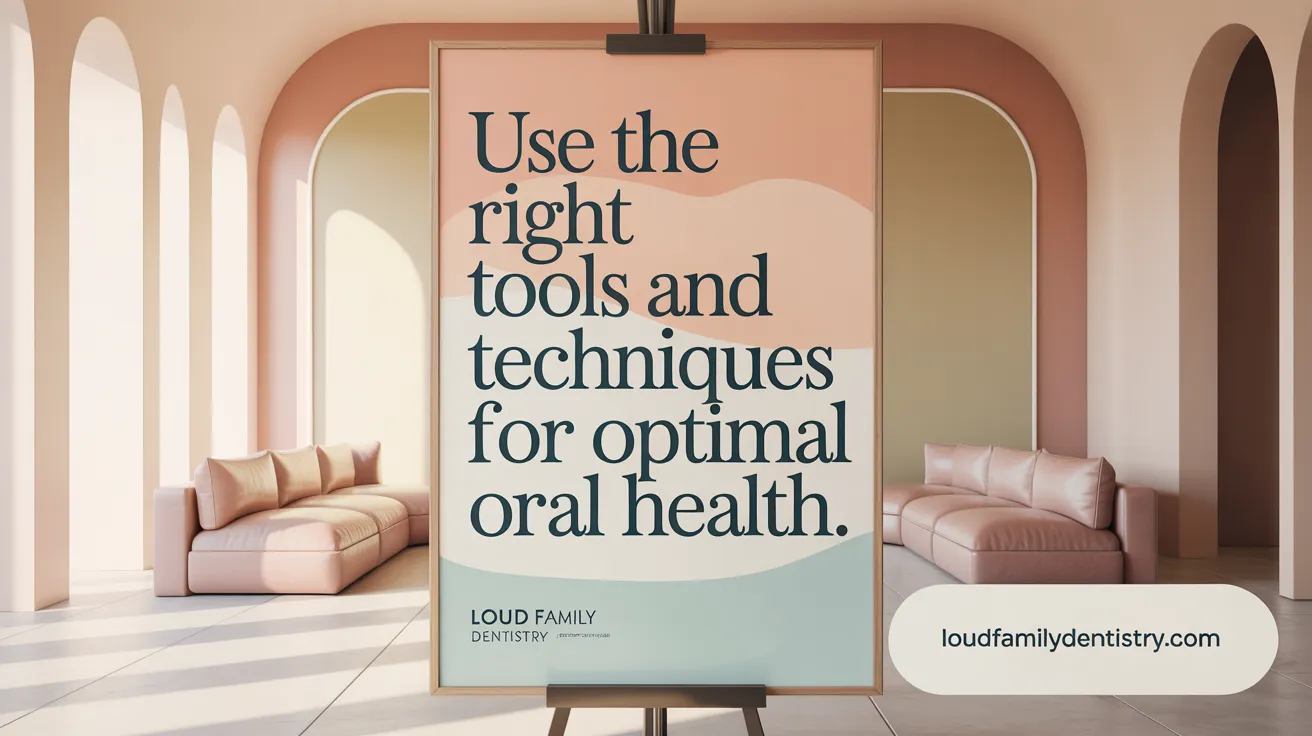 Achieving excellent oral hygiene at home involves a consistent routine combining proper techniques and suitable tools. The foundation starts with effective brushing: use a soft-bristled toothbrush or an electric toothbrush, and position it at a 45-degree angle toward the gum line. Brushing gently in small circular motions for at least two minutes ensures all surfaces of your teeth—including front, back, and chewing surfaces—are thoroughly cleaned. Remember to brush your tongue gently each time to help eliminate bacteria responsible for bad breath.
Achieving excellent oral hygiene at home involves a consistent routine combining proper techniques and suitable tools. The foundation starts with effective brushing: use a soft-bristled toothbrush or an electric toothbrush, and position it at a 45-degree angle toward the gum line. Brushing gently in small circular motions for at least two minutes ensures all surfaces of your teeth—including front, back, and chewing surfaces—are thoroughly cleaned. Remember to brush your tongue gently each time to help eliminate bacteria responsible for bad breath.
In addition to brushing, daily flossing is essential. Use about 18 inches of floss, winding it around your middle fingers, and gently slide it in a C-shape beneath the gum line to remove plaque and food debris. Flossing gently prevents gum injury while effectively cleaning between teeth. For those who find traditional floss challenging, alternatives like interdental brushes, water flossers, and floss threaders can improve access and efficiency.
Enhance your routine with additional tools such as mouthwash—preferably alcohol-free and containing fluoride or antimicrobial agents—to reduce bacteria and strengthen enamel. Incorporating tongue scrapers can further diminish bacterial load and improve oral freshness.
Replacing toothbrushes and other oral hygiene tools regularly—every three to four months or sooner if frayed—is crucial to prevent bacteria buildup and ensure cleaning effectiveness. Routine dental visits every six months support professional removal of plaque and tartar, early detection of issues, and personalized advice.
In summary, combining gentle but effective brushing and flossing techniques with the right products and regular dental checkups forms the cornerstone of successful home oral hygiene, helping to prevent cavities, gum disease, and other oral health problems.
Supporting Professional Care With Consistent Daily Habits
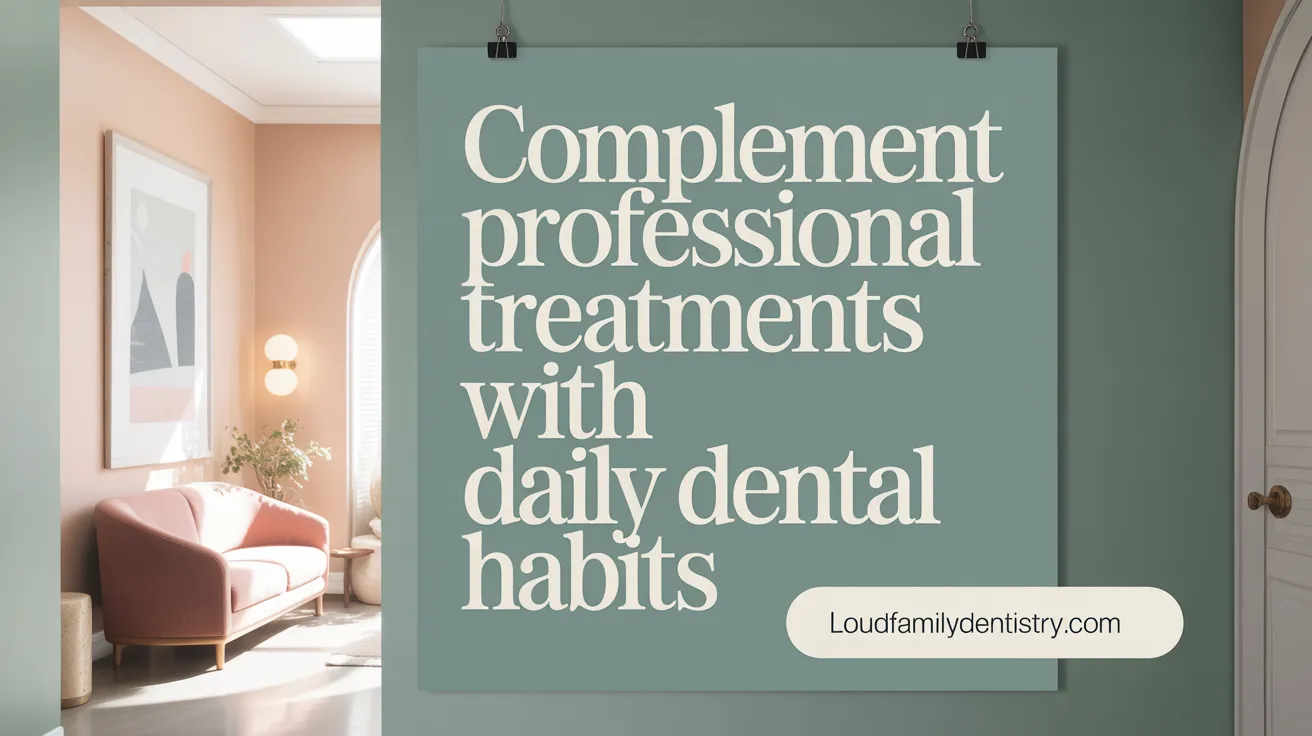 Complementing professional dental treatments with proper at-home oral hygiene is fundamental for maintaining healthy teeth and gums. Dentists recommend brushing twice daily with fluoride toothpaste for at least two minutes, ensuring all tooth surfaces, including the tongue, are thoroughly cleaned. Using a soft-bristled toothbrush at a 45-degree angle toward the gumline helps remove plaque effectively without damaging soft tissues. Flossing every day, using traditional floss, interdental brushes, or water flossers, targets plaque and debris between teeth and beneath the gum line—areas where brushing alone cannot reach. This practice significantly reduces the risk of cavities and periodontal disease.
Complementing professional dental treatments with proper at-home oral hygiene is fundamental for maintaining healthy teeth and gums. Dentists recommend brushing twice daily with fluoride toothpaste for at least two minutes, ensuring all tooth surfaces, including the tongue, are thoroughly cleaned. Using a soft-bristled toothbrush at a 45-degree angle toward the gumline helps remove plaque effectively without damaging soft tissues. Flossing every day, using traditional floss, interdental brushes, or water flossers, targets plaque and debris between teeth and beneath the gum line—areas where brushing alone cannot reach. This practice significantly reduces the risk of cavities and periodontal disease.
Incorporating antimicrobial mouthwashes, particularly those with ingredients like cetylpyridinium chloride or essential oils, can further reduce harmful bacteria and gingivitis, especially when used after brushing and flossing. Maintaining a balanced diet with limited sugar intake supports restorative efforts by reducing acid attacks and plaque formation, while avoiding harmful lifestyle factors such as tobacco use and excessive alcohol consumption helps preserve oral health.
Regular professional visits, typically every six months, are crucial for early problem detection and professional cleanings that remove hardened tartar and plaque, which cannot be eliminated at home. Furthermore, choosing ADA-approved dental products ensures safety and effectiveness, and timely replacement of toothbrushes—every three to four months keeps cleaning tools effective. This combination of consistent daily habits and routine professional care creates a robust framework for long-term oral health, reducing the likelihood of pain, infections, and complex dental procedures.
Post-Treatment Care: Maximizing Healing and Maintaining Results
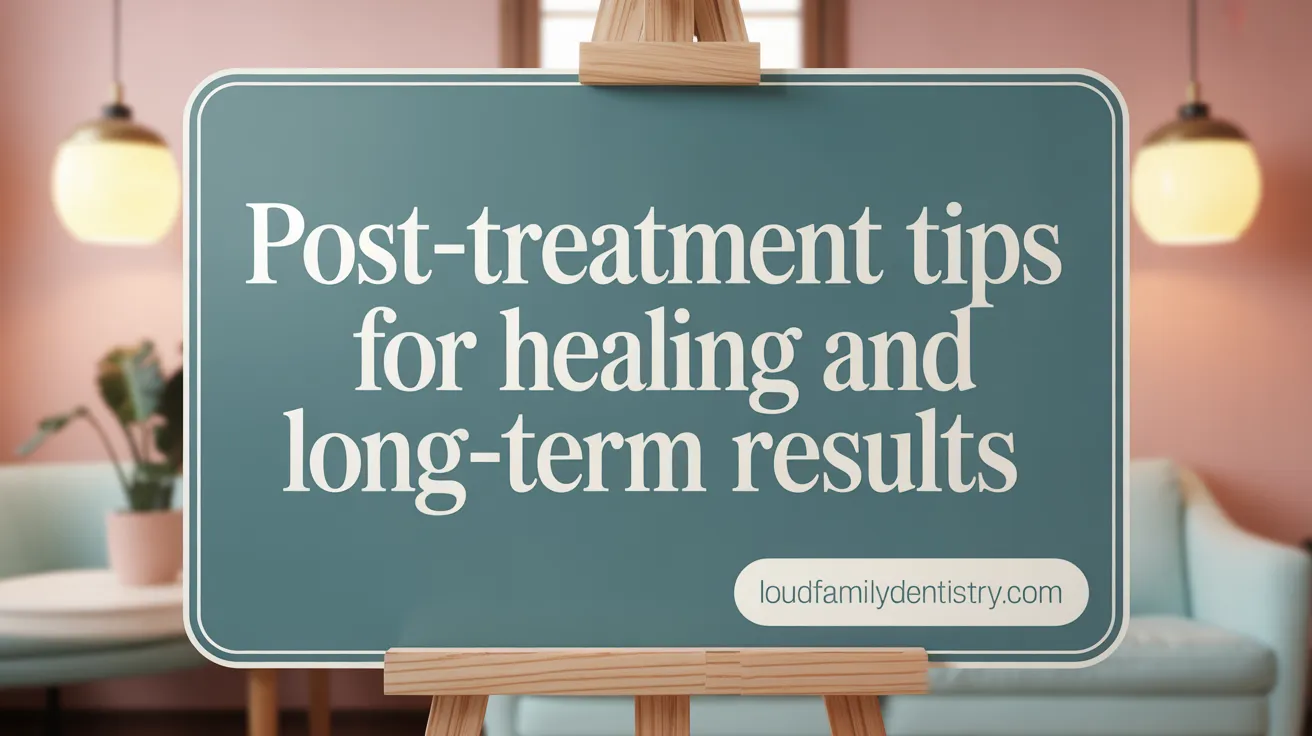 After dental procedures such as cleanings, whitening, or surgeries, careful post-treatment care is vital for optimal healing and long-lasting results. First and foremost, it is important to adhere to your dentist’s specific instructions, which may include gentle brushing with a soft-bristled toothbrush and using prescribed mouth rinses to reduce bacterial buildup and promote tissue healing (Essential care after a dental procedure).
After dental procedures such as cleanings, whitening, or surgeries, careful post-treatment care is vital for optimal healing and long-lasting results. First and foremost, it is important to adhere to your dentist’s specific instructions, which may include gentle brushing with a soft-bristled toothbrush and using prescribed mouth rinses to reduce bacterial buildup and promote tissue healing (Essential care after a dental procedure).
Managing swelling and discomfort is also crucial. Applying ice packs intermittently helps minimize swelling, while over-the-counter pain relievers—like ibuprofen—can alleviate soreness (Post-Procedure Dental Care). Avoiding hot, spicy, or hard foods during the initial recovery phase prevents irritation of sensitive tissues (Post-operative instructions for extractions).
Dietary considerations play an integral role in post-procedure care. During the healing period, stick to soft, non-staining foods such as yogurt, mashed potatoes, and non-acidic fruits. Avoid stain-causing items like coffee, tea, wine, and dark beverages immediately after whitening or surgery, as these can compromise the results (Aftercare Tips for Professional Teeth Whitening).
Maintaining gentle oral hygiene routines is essential. Refrain from vigorous rinsing or brushing immediately after procedures, and instead, gently clean the area to prevent dislodging blood clots or causing irritation. Attending follow-up visits allows your dentist to evaluate healing progress and address any concerns promptly (post-dental procedure care).
By following these guidelines—limiting strenuous activity, avoiding smoking and alcohol, and maintaining good oral hygiene—you help ensure proper healing, reduce the risk of complications, and preserve the results of your dental treatment for years to come (Proper dental care for effective healing).
Understanding Dental Treatments to Enhance At-Home Care
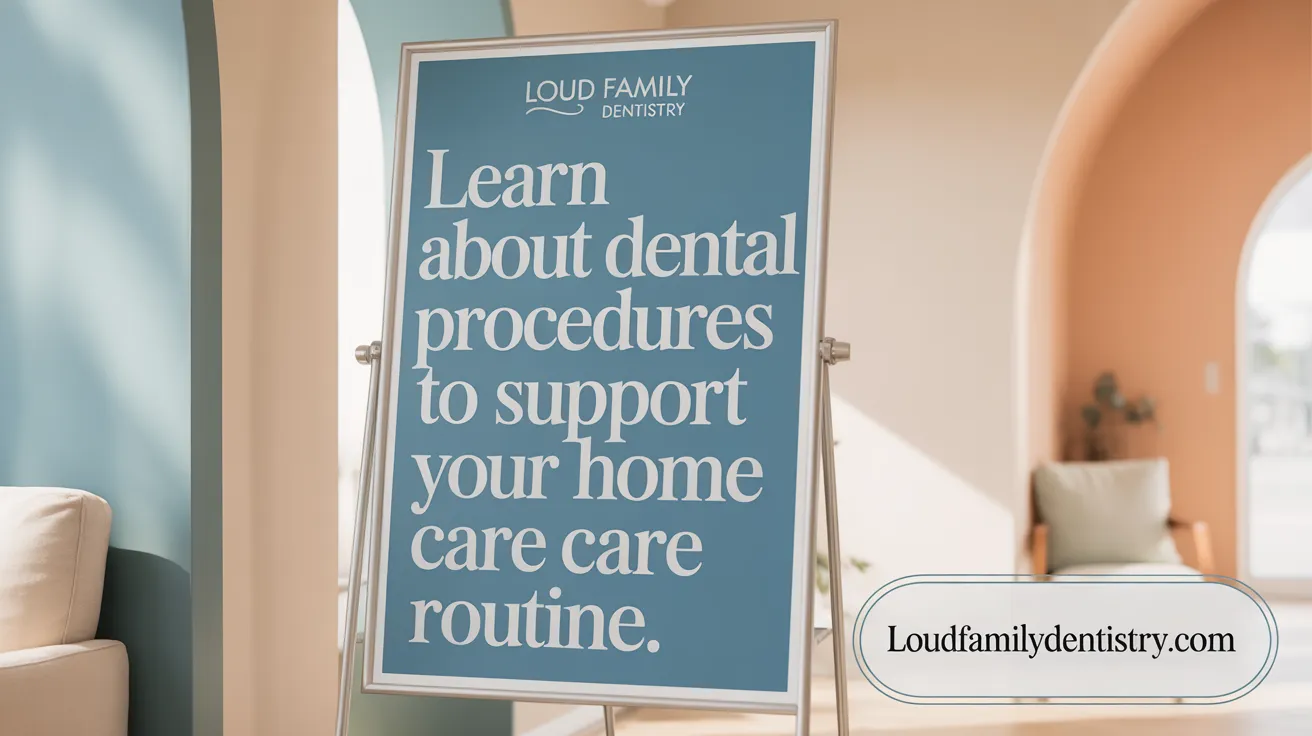 Knowing about the various dental procedures available can significantly enhance a patient's ability to appreciate their purpose and benefits. Common treatments such as fillings, crowns, root canals, and extractions are designed to restore or maintain oral health, prevent further decay, and relieve pain. When patients understand what each procedure involves and how it contributes to their overall well-being, they are more likely to cooperate with recommended treatments and follow post-procedure instructions carefully.
Knowing about the various dental procedures available can significantly enhance a patient's ability to appreciate their purpose and benefits. Common treatments such as fillings, crowns, root canals, and extractions are designed to restore or maintain oral health, prevent further decay, and relieve pain. When patients understand what each procedure involves and how it contributes to their overall well-being, they are more likely to cooperate with recommended treatments and follow post-procedure instructions carefully.
Preventive treatments like fluoride applications and sealants help to protect teeth from future decay, reducing the need for invasive procedures later on. Restorative treatments, including bonding, veneers, and implants, not only improve appearance but also restore function and ease of chewing. Recognizing the role these procedures play in maintaining oral health encourages individuals to adopt better at-home practices.
Moreover, understanding the connection between dental health and overall physical health—such as how gum disease links to heart disease or diabetes—motivates proactive care. When patients comprehend that their oral health impacts their general health, they are more committed to routine brushing, flossing, and regular dental visits. This comprehensive knowledge fosters consistency in preventive behaviors, ultimately leading to better long-term outcomes.
Gaining insight into the purpose and advantages of dental treatments transforms dental care from a reactive process into a committed, informed approach. Patients who are knowledgeable can make decisions aligned with their health goals, adhere to professional guidance, and practice habits that prevent issues before they arise, securing a healthier smile for a lifetime.
Building and Maintaining a Comprehensive Home Dental Hygiene Routine
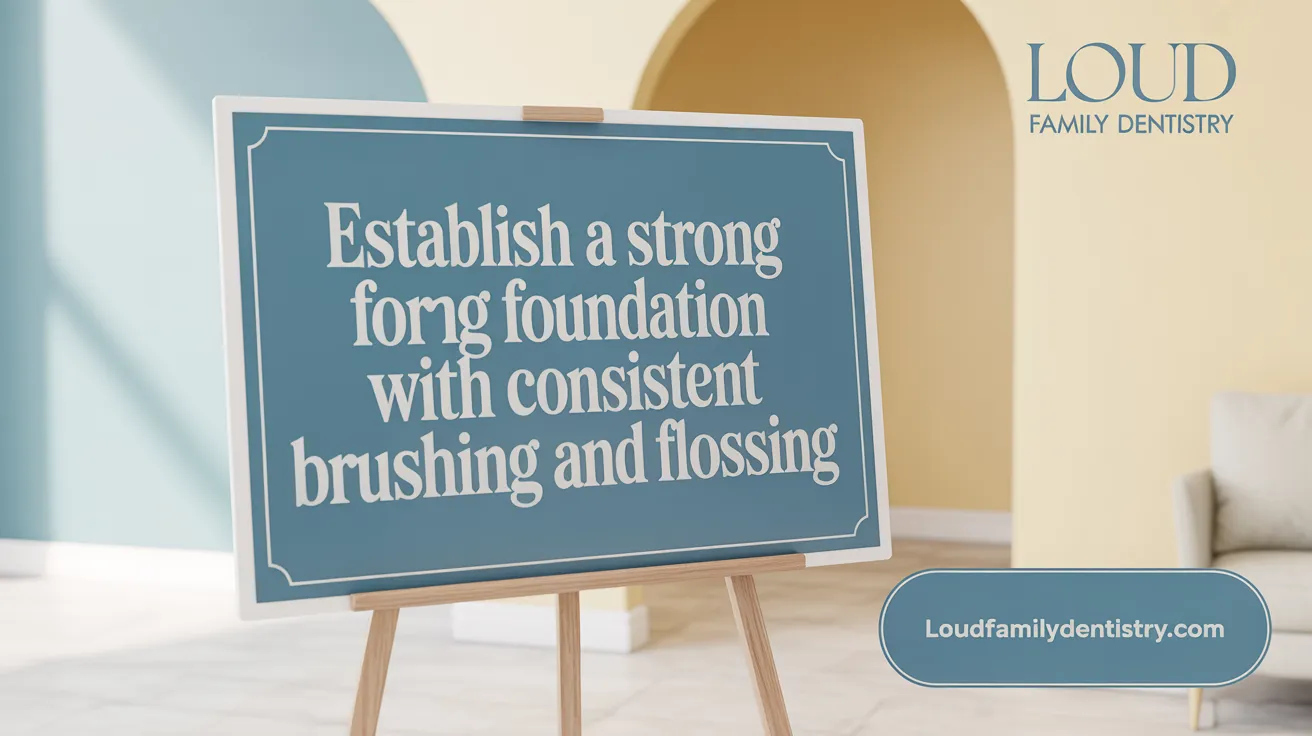 Establishing a thorough home dental hygiene routine involves multiple daily practices to keep your teeth and gums healthy. Start by brushing at least twice a day with fluoride toothpaste for a full two minutes each session. Use a soft-bristled toothbrush angled at 45 degrees toward the gumline, employing gentle circular motions to effectively clean all surfaces of each tooth and the gumline. Don't forget to brush your tongue or use a tongue scraper to eliminate bacteria that can cause bad breath and other oral health issues.
Establishing a thorough home dental hygiene routine involves multiple daily practices to keep your teeth and gums healthy. Start by brushing at least twice a day with fluoride toothpaste for a full two minutes each session. Use a soft-bristled toothbrush angled at 45 degrees toward the gumline, employing gentle circular motions to effectively clean all surfaces of each tooth and the gumline. Don't forget to brush your tongue or use a tongue scraper to eliminate bacteria that can cause bad breath and other oral health issues.
Flossing daily is equally important; use about 18 inches of floss, gently curving it into a C-shape around each tooth while sliding beneath the gumline. If traditional floss is challenging, consider interdental brushes or water flossers, which can be easier to use and equally effective in removing plaque and food debris from between teeth.
Adding an antibacterial, alcohol-free mouthwash into your routine provides extra protection against plaque, bacteria, and decay. Swish for at least 30 seconds, especially after brushing and flossing.
Supporting your oral health also depends on your diet: limiting sugary and acidic foods and drinks reduces the risk of cavities and enamel erosion. Drink plenty of fluoridated water and maintain hydration to promote saliva production, which naturally cleanses the mouth.
Regular dental visits are vital. Schedule professional cleanings and check-ups every six months, or more frequently if recommended, to detect problems early and receive professional cleaning that removes tartar buildup. Tailor your routines based on individual needs, such as using special tools or seeking guidance from your dentist for personalized advice.
Avoid harmful habits like tobacco use, which can impair gum health and increase cancer risk. By combining consistent daily practices with professional dental care, you can effectively preserve your oral health and enjoy a brighter, healthier smile.
Sustaining Your Smile Through Combined Care
Optimal oral health is the result of a synergistic relationship between professional dental treatments and diligent at-home care. By adopting scientifically supported hygiene practices, using recommended tools and products, and understanding the purpose of professional interventions, individuals can effectively maintain and enhance their dental health. Following post-treatment care guidelines ensures proper healing and longevity of results. Establishing comprehensive daily routines supported by regular dental checkups fosters lasting wellness, reduces complications, and helps preserve a confident, radiant smile for life.
